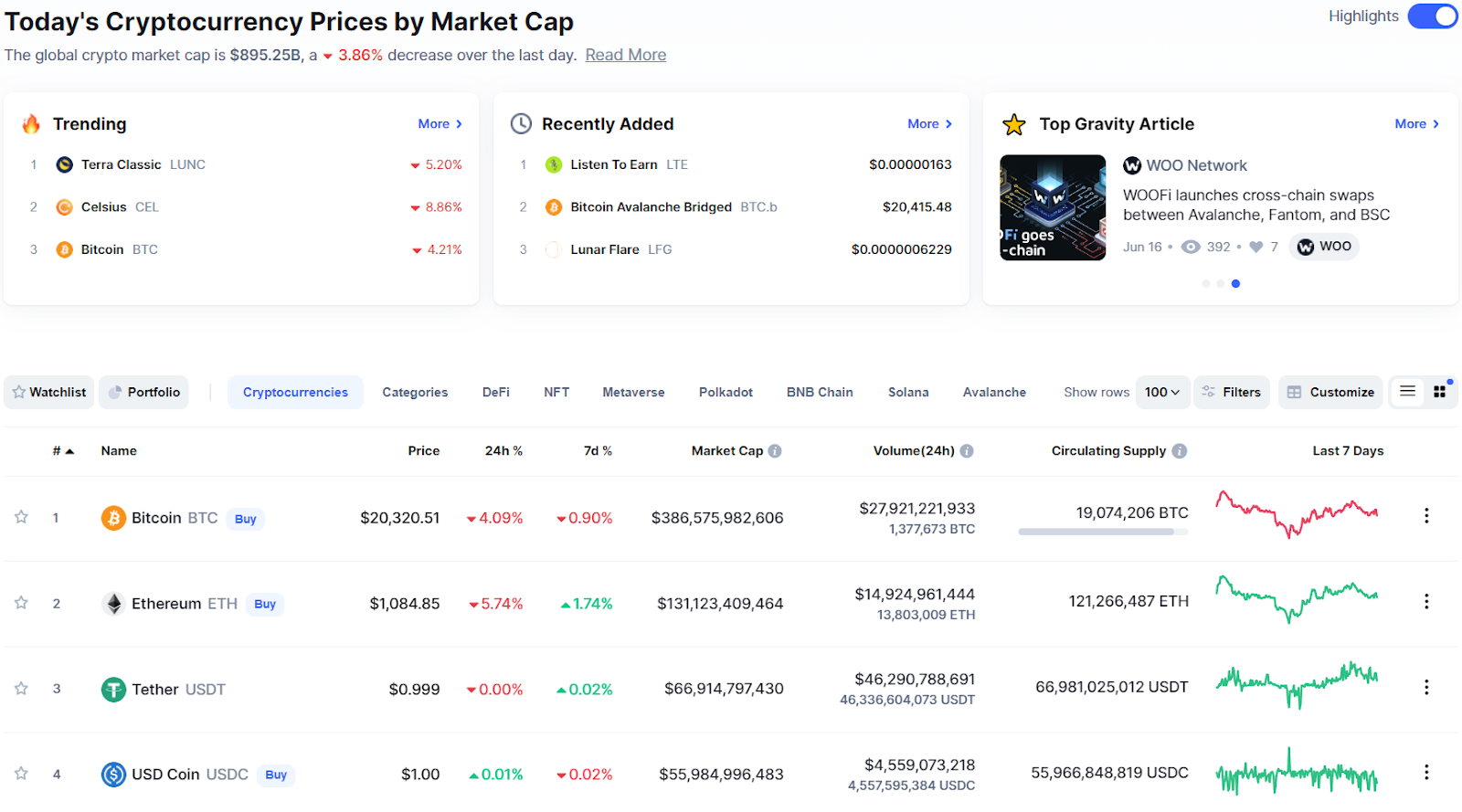- Niciun produs în coș
cryptocurrencies all
Cryptocurrencies all
Welcome to CoinMarketCap.com! This site was founded in May 2013 by Brandon Chez to provide up-to-date cryptocurrency prices, charts and data about the emerging cryptocurrency markets https://enucuzkamera.com/. Since then, the world of blockchain and cryptocurrency has grown exponentially and we are very proud to have grown with it. We take our data very seriously and we do not change our data to fit any narrative: we stand for accurately, timely and unbiased information.
Even though market cap is a widely used metric, it can sometimes be misleading. A good rule of thumb is that the usefulness of any given cryptocurrency’s market cap metric increases in proportion with the cryptocurrency’s trading volume. If a cryptocurrency is actively traded and has deep liquidity across many different exchanges, it becomes much harder for single actors to manipulate prices and create an unrealistic market cap for the cryptocurrency.
However, it’s not always the case that big market moves are connected to specific events. Sometimes, the cryptocurrency market moves because of technical factors, such as important support and resistance price levels.

Do all cryptocurrencies use blockchain
Many blockchains are entirely open source. This means that everyone can view its code. This gives auditors the ability to review cryptocurrencies like Bitcoin for security. However, it also means there is no real authority on who controls Bitcoin’s code or how it is edited. Because of this, anyone can suggest changes or upgrades to the system. If a majority of the network users agree that the new version of the code with the upgrade is sound and worthwhile, then Bitcoin can be updated.
Blockchain and cryptocurrency are still in their early stages. While they have already disrupted industries like finance, there is much more to come. As technology continues to evolve, blockchain will likely become more scalable and efficient, addressing some of its current challenges.
While confidentiality on the blockchain network protects users from hacks and preserves privacy, it also allows for illegal trading and activity on the blockchain network. The most cited example of blockchain being used for illicit transactions is probably the Silk Road, an online dark web illegal-drug and money laundering marketplace operating from February 2011 until October 2013, when the FBI shut it down.
Many blockchains are entirely open source. This means that everyone can view its code. This gives auditors the ability to review cryptocurrencies like Bitcoin for security. However, it also means there is no real authority on who controls Bitcoin’s code or how it is edited. Because of this, anyone can suggest changes or upgrades to the system. If a majority of the network users agree that the new version of the code with the upgrade is sound and worthwhile, then Bitcoin can be updated.
Blockchain and cryptocurrency are still in their early stages. While they have already disrupted industries like finance, there is much more to come. As technology continues to evolve, blockchain will likely become more scalable and efficient, addressing some of its current challenges.
Market cap of all cryptocurrencies
For smaller alternative cryptocurrencies or altcoins, there can be noticeable price discrepancies across different exchanges. At CoinCodex, we weigh the price data by volume so that the most active markets have the biggest influence on the prices we’re displaying.
Almost. We have a process that we use to verify assets. Once verified, we create a coin description page like this. The world of crypto now contains many coins and tokens that we feel unable to verify. In those situations, our Dexscan product lists them automatically by taking on-chain data for newly created smart contracts. We do not cover every chain, but at the time of writing we track the top 70 crypto chains, which means that we list more than 97% of all tokens.
Generally, altcoins attempt to improve upon the basic design of Bitcoin by introducing technology that is absent from Bitcoin. This includes privacy technologies, different distributed ledger architectures and consensus mechanisms.
Trackbacks and pingbacks
No trackback or pingback available for this article.


